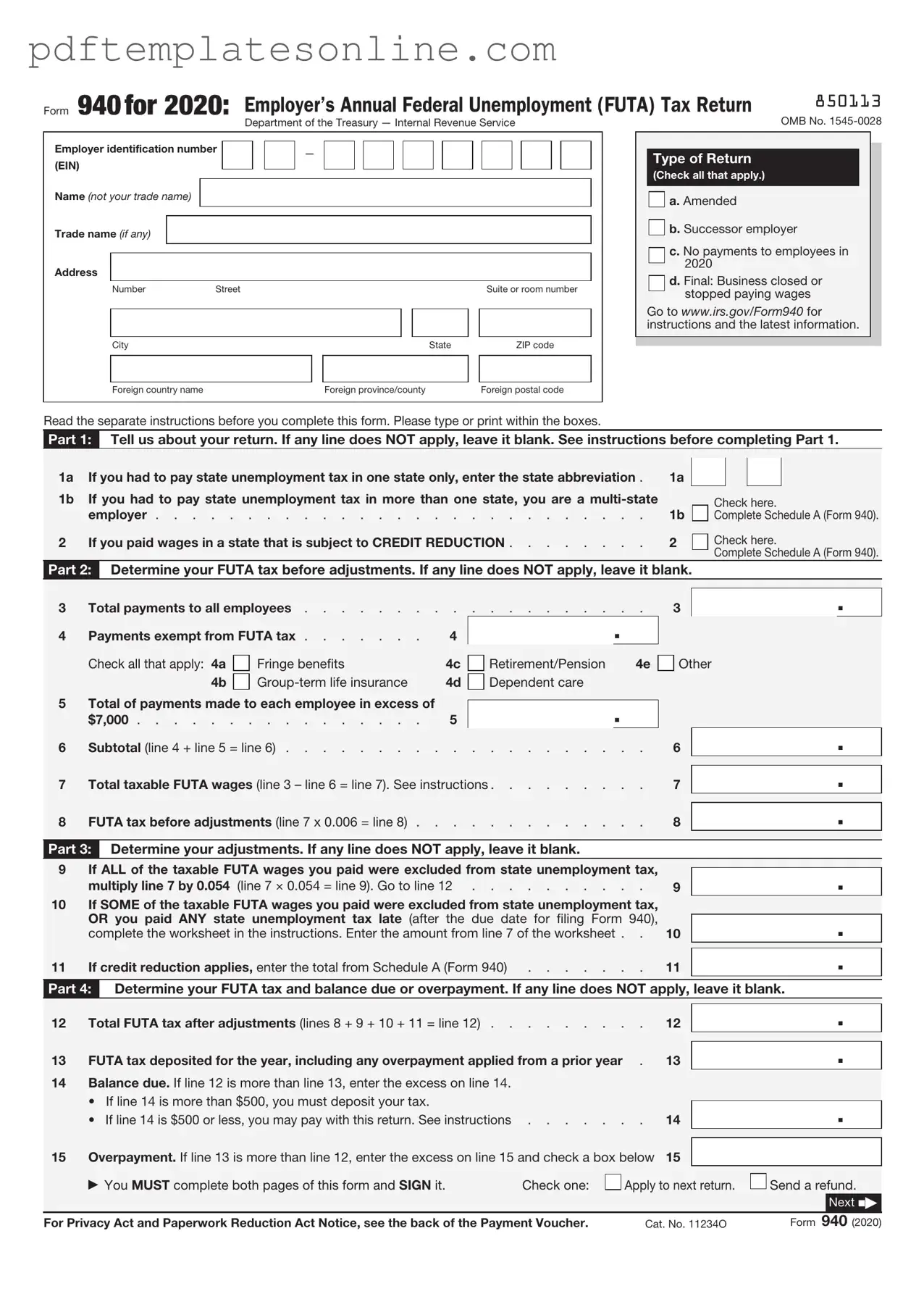Filling out the IRS 940 form can be a daunting task, especially for those who are new to payroll taxes. One common mistake is not checking the eligibility criteria for filing the form. Many employers mistakenly assume they need to file without confirming whether they meet the threshold for federal unemployment tax liability. It's essential to understand the requirements to avoid unnecessary complications.
Another frequent error is incorrect calculations of taxable wages. Employers often miscalculate the total wages subject to unemployment tax, which can lead to underpayment or overpayment of taxes. Keeping accurate records and regularly updating payroll information can help mitigate this issue.
Many people also overlook the importance of reporting all employees accurately. Failing to include all employees who received wages during the year can result in discrepancies. This includes part-time workers, seasonal employees, and even those who may have left the company. Every employee's wages need to be accounted for to ensure compliance.
Additionally, errors can occur when transferring information from payroll records to the form. Simple typos or transposed numbers can lead to significant issues. It's advisable to double-check all entries and consider having a second pair of eyes review the information before submission.
Some employers neglect to sign and date the form. This might seem minor, but an unsigned form is considered incomplete and can delay processing. Always ensure that the form is signed and dated before sending it to the IRS.
Another common mistake is failing to file on time. The IRS imposes penalties for late submissions, which can accumulate quickly. Setting reminders or using electronic filing options can help ensure that deadlines are met.
Inaccurate identification of the state unemployment tax paid can also pose problems. Employers sometimes confuse state tax payments with federal obligations. It’s crucial to distinguish between the two and report them correctly to avoid potential audits.
Lastly, not keeping copies of submitted forms is a mistake that can lead to headaches down the line. Having a record of what was filed is essential for reference and can be invaluable in case of any discrepancies or audits. Keeping organized records can save time and stress in the future.
